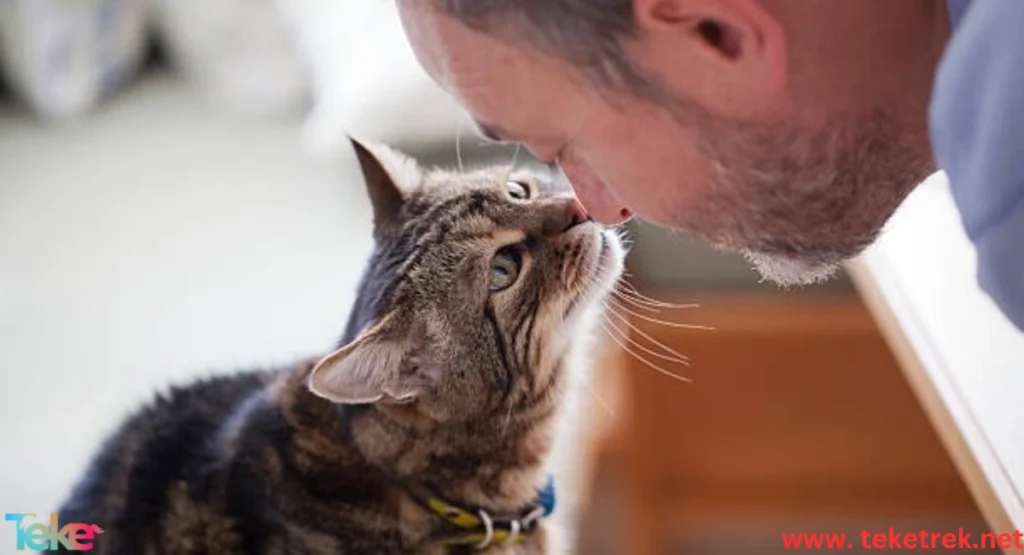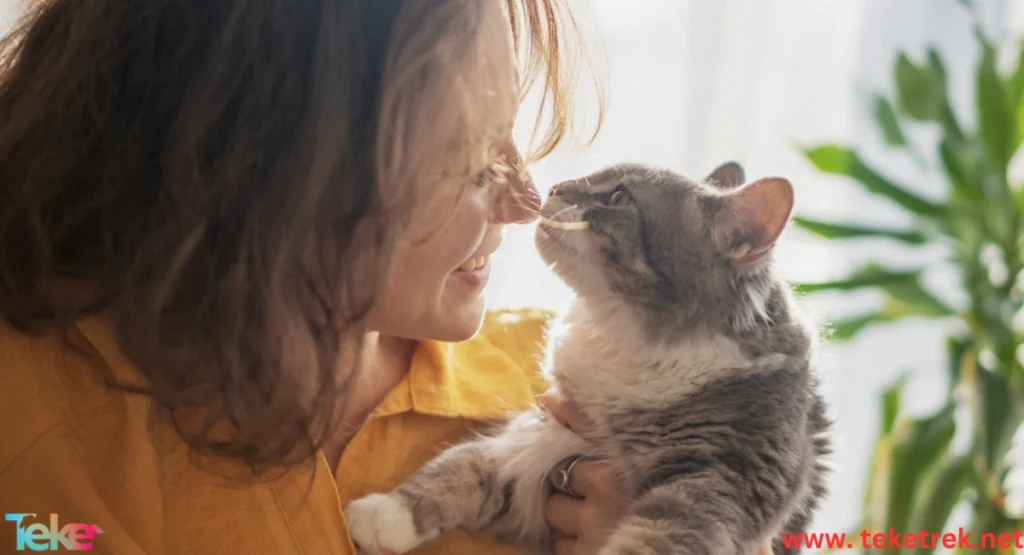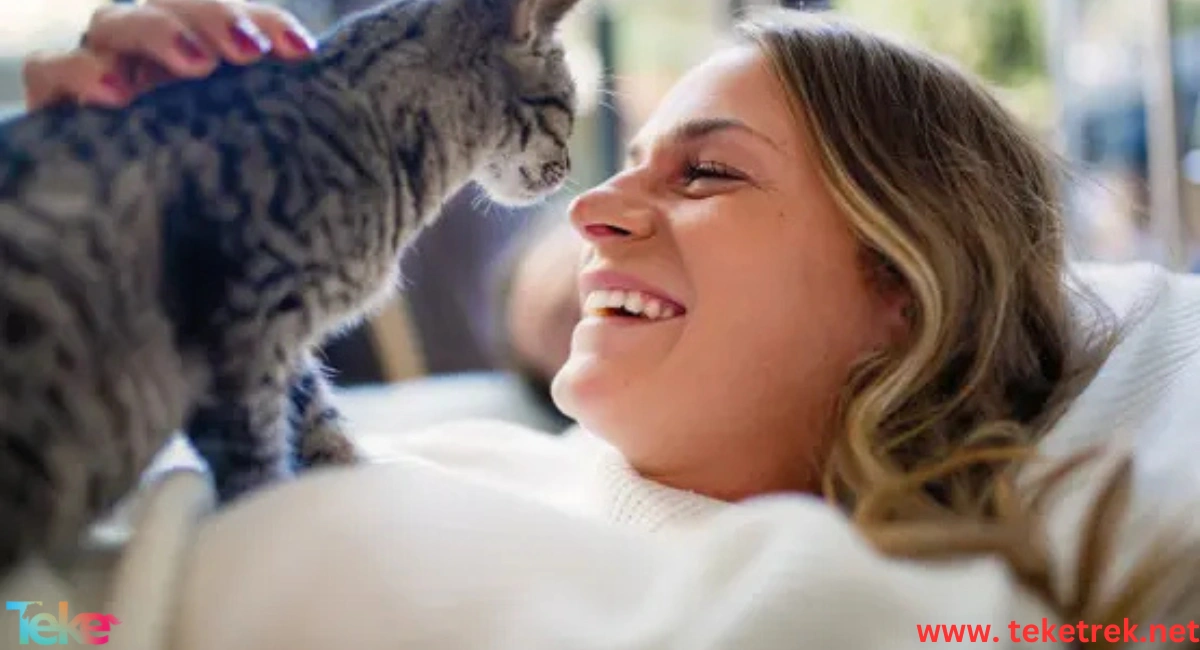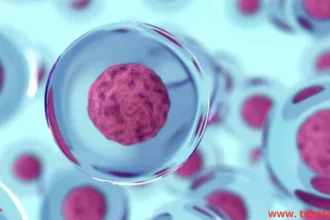Licking the owner’s face is a common cat behavior that expresses affection and belonging. It resembles self-grooming or grooming of kittens but can also indicate anxiety or an attempt to get attention. It is a loving gesture proving that the cat considers its owner part of its family, just as a mother cat licks her kittens. However, excessive licking may be a sign of stress, requiring a veterinary consultation to identify and treat the possible cause. Here are the details in this article from Tiki Trik.
Cat Behaviors: An Overview
Cats exhibit a variety of complex behaviors, including communication through meowing and body language such as scratching and tail movements, a love for hiding to feel safe, curiosity in exploring their environment, and marking territory by scent.
Cats also express love and trust through slow blinking and placing their tails near their owners’ faces.
Types of Cat Behaviors:
Communication:
- Meowing: Used to express hunger, a need for attention, or discomfort.
Body Language:
- Scratching: To sharpen claws and mark territory.
- Tail wagging: A vertical tail wag indicates happiness, while flicking shows discomfort or stress.
- Slow blinking: A sign of trust and affection toward others.
- Head rubbing: To deposit scents, including pheromones from facial glands, on objects and people.
Instinctive Behaviors:
- Hiding: Cats do this to feel safe and calm, especially in boxes or tight spaces.
- Curiosity: They like to explore their surroundings and check out new or changed areas.
- Territoriality: Cats are territorial and use scent marking to define their areas.
Emotional Expressions:
- Lying down: Cats may sleep in their owner’s lap for warmth and security.
- Alertness: Cats show anxiety or discomfort by unusual behaviors, like changing vocalizations or ignoring others.
Self-care:
- Grooming: Cats clean themselves as part of their overall wellbeing.

Emotional Reasons Behind a Cat Licking Its Owner’s Face
Cats lick their owner’s face as an expression of affection and trust, a way to strengthen emotional bonds. This behavior resembles the way cats groom one another.
Licking may also serve as a way to seek attention or indicate a state of relaxation.
The interpretation depends on the context; excessive licking may indicate anxiety or a medical issue requiring a vet’s evaluation.
Emotional expressions and cat behaviors:
- Affection and care: Cats lick their owners to show love and care, a behavior mothers show their kittens, reflecting that the cat sees the owner as family.
- Trust: A cat licking you signifies that it trusts you and feels secure in your presence.
- Sign of belonging: Licking is a sign of attachment and affection, showing how much the cat cares about you.
Does This Behavior Indicate Illness or Anxiety?
Generally, a cat licking its owner’s face is a sign of love, affection, and care, seen by cats as a natural behavior similar to cleaning their young. However, if the licking becomes excessive or accompanies other stress-related behaviors like heavy fur shedding, it may indicate anxiety or stress, necessitating veterinary consultation.
Licking is natural and positive when:
- Showing affection: Licking is a gesture of love and acceptance from the cat to its owner.
- Care and motherhood: The cat tries to care for you by licking, just as it does with its kittens.
- Sign of belonging: The cat may be telling you “you are mine” when it licks you.
Licking may indicate a problem when:
- Excessive licking: If your cat licks you or itself compulsively (psychogenic alopecia), it may be a sign of stress or anxiety.
The Difference Between a Cat Licking Your Face and Licking Itself
When your cat licks your face, it expresses love, trust, and shares its family with you. Licking itself is a natural behavior for grooming, distributing natural oils on its fur, and spreading scents that might deter predators. Licking also helps remove food residue or dirt.
Cat licking your face means:
- Affection and care: The cat’s licking is a clear sign of love and affection, offering you care as it does to its kittens.
- Family recognition: Licking you may be part of social bonding, telling you that you are safe and trusted.
- Scent sharing: Cats lick group members to exchange scents, building strong bonds and a sense of belonging.
Cat licking itself means:
- Self-cleaning: Cats use their rough tongues to clean their fur and evenly distribute natural oils, keeping their coat clean and healthy.
- Removing scents: Cats lick themselves to remove odors that might attract predators, a natural defensive mechanism.
- Warning system: Sometimes licking itself signals that something is wrong nearby, acting as an early warning.
The Most Suitable Dog Breeds for Kuwait’s Climate: Heat-Resistant and Indoor-Friendly
When Is This Behavior Excessive or Annoying?
Licking is excessive and annoying when it causes skin irritation or is accompanied by heavy hair loss or other signs of illness, indicating a medical or behavioral problem that requires veterinary or behavioral expert advice. Normal licking is a sign of love for you or self-care.
When licking is normal:
- Expression of affection: Your cat shows love and attention by licking you, as a way to “claim” you.
- Self-grooming: Cats lick themselves to clean and distribute natural oils, an instinctive behavior.
- Removing odors: Cats lick to get rid of smells that might attract predators, like food odors.
When licking is excessive or annoying:
You may notice:
- Skin irritation: If licking causes irritation on your skin or the cat’s skin.
- Excessive hair loss: If your cat licks itself excessively, leading to bald patches.
- Other signs of problems: Accompanied by lethargy or other symptoms.
- Behavioral changes: If licking replaces normal behaviors or the cat appears anxious or stressed before licking.

How to Respond Properly to This Behavior
Respond gently to your cat licking your face—it’s a sign of love and attention. Licking itself is usually normal for personal hygiene and survival instinct, but if excessive or accompanied by illness signs, it may indicate a health or psychological problem needing veterinary care.
When your cat licks you:
- Expression of love and bonding: Consider it a sign of affection; in the cat world, this is a traditional behavior to care for those they consider family or their “clan.”
- Strengthening social bonds: Cats use this behavior to strengthen social ties with each other and do the same with you to show trust and comfort.
- How to handle it: Enjoy the licking and pamper your cat; it’s a great way to show mutual care and strengthen your relationship.
When your cat licks itself:
- Personal hygiene: Cats lick themselves primarily to stay clean, a completely natural behavior.
- Distributing natural oils: Licking helps spread natural oils over the fur, keeping it healthy.
- Responding to food smells: Cats may lick themselves after eating to remove scents that might attract predators, an instinctive protective behavior.
Conclusion
In conclusion, a cat licking its owner’s face is a natural behavior expressing love and care. It shows that the cat considers you part of its family and wants to care for you as it does for its kittens. It is a gesture full of affection and belonging.





